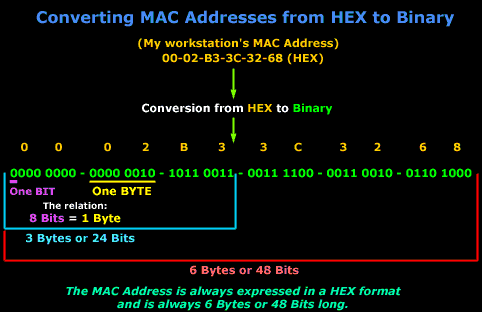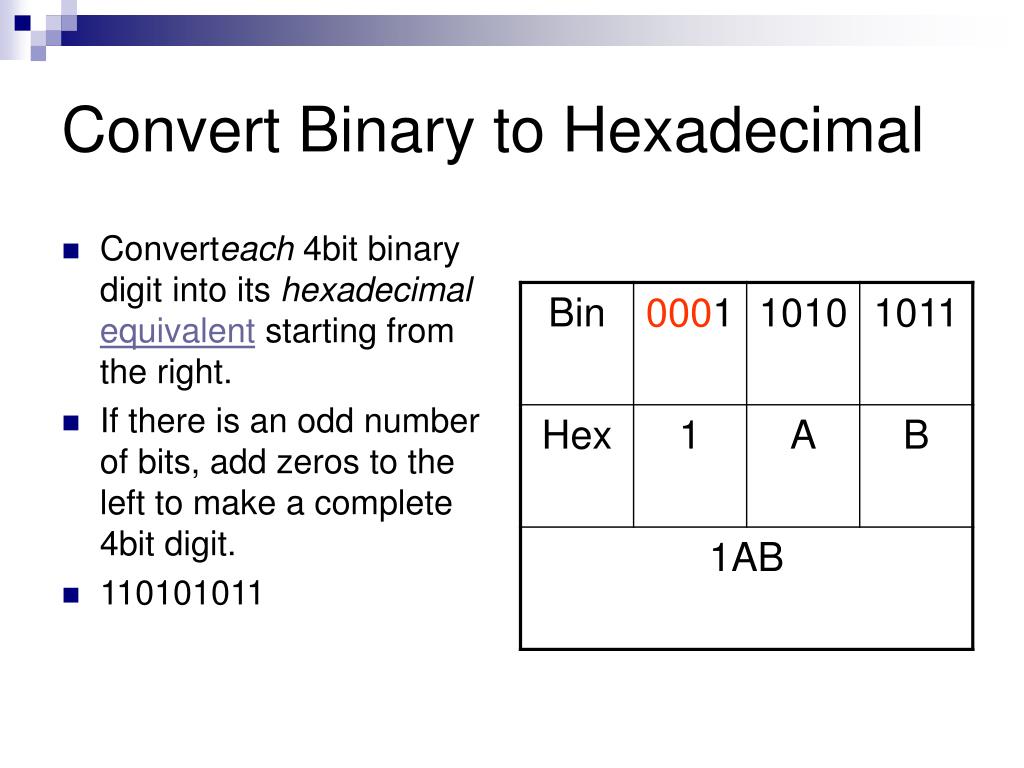


Though these could also be represented in dotted decimal, it’s more efficient to use a different number base: base 16 (hexadecimal). A MAC address is a 48-bit binary number– 16 bits longer than an IPv4 address – giving it 6 octets rather than the 4 octets in an IPv4 address. Now we’ll turn our attention to the MAC address.Ī MAC address (sometimes called the hardware address or physical address) is also a string of binary numbers. In the next video we’ll look at the representation of a MAC address. This representation is known as dotted decimal. These are then shown together separated by dots as you can see in this example IP address here. The final step in translating the 32 binary bits into the dotted decimal equivalent is to convert each of these four octets into a decimal number. It will be 2 to the n, minus 1, where n is the number of binary bits.īut I’ve digressed – a little bit! Let’s go back to that IP address. This provides us with a neat and easy way of working out the highest decimal number we can represent with any given number of binary bits. So 255 is the highest decimal number we can represent using 8 binary bits. So that’s 2 to the eight minus 1 equals 255. One of these numbers will, of course be a zero, making it 255 as the highest decimal number we can represent with a group of 8 bits. 8 binary bits enables us to represent 2 to the eight different decimal numbers.

Because there’s a 1 in each position this would result in adding together 2 to the seven, 2 to the six, 2 to the five, 2 to the four, 2 to the three, 2 to the two, 2 to the one and 2 to the zero giving 255.īut there’s a quicker way than this. Or we could calculate it ourselves using the weighting system I discussed in Part 1 of this session. What would this be in decimal? We could go for the easy way of answering this question which would be to use a binary-to-decimal converter – maybe one of those I showed you in Part 2 of this session. What’s the highest decimal number we can represent using 8 bits? Well, the highest 8-bit number has a 1 in every place. A group of 8 bits is often referred to as an octet. When representing an IP address as a decimal number, we actually deal with these groups in pairs. You can see how difficult it is to read this number, so for convenience I’ll show the 32 binary numbers in groups of four bits. To a computer, this would look like this.
#How to convert mac address to 48 binary series#
Remember we started off this session in Part 1 with a reminder of what an IP address and a MAC address look like.Ĭomputers can only recognise these addresses as a series of zeros and ones, but humans find long strings of zeros and ones difficult to read and interpret so this is why we represent them in this way.Īn IPv4 address is in fact a 32-bit binary number which, as you know from Part 1, provides nearly 4 million 3 hundred different addresses.īut let’s just focus on the IP address. In this video I’ll look at IP addresses, specifically IP version 4 addresses and in the next video I’ll look at MAC addresses. Now you’re familiar with the idea of representing numbers with different number bases, we’ll have a closer look at how network addresses are represented.


 0 kommentar(er)
0 kommentar(er)
